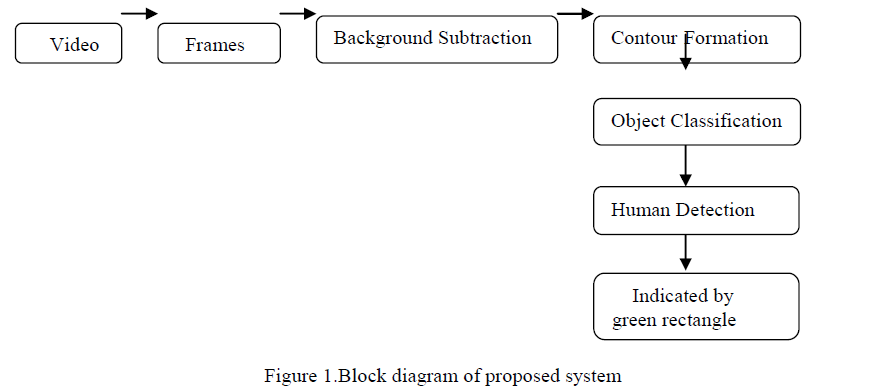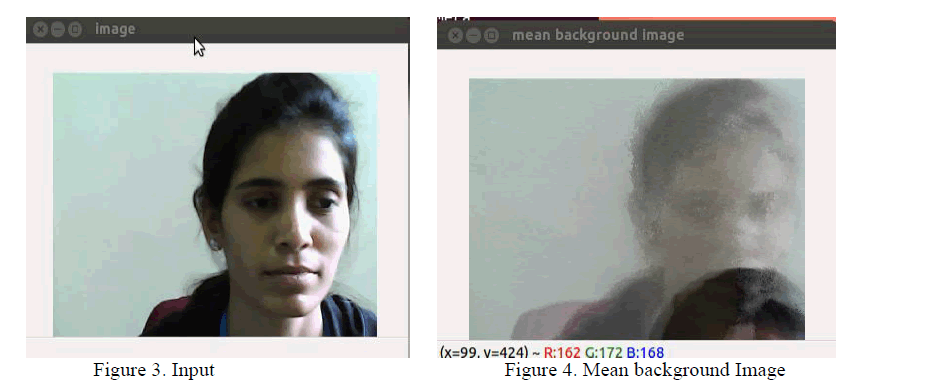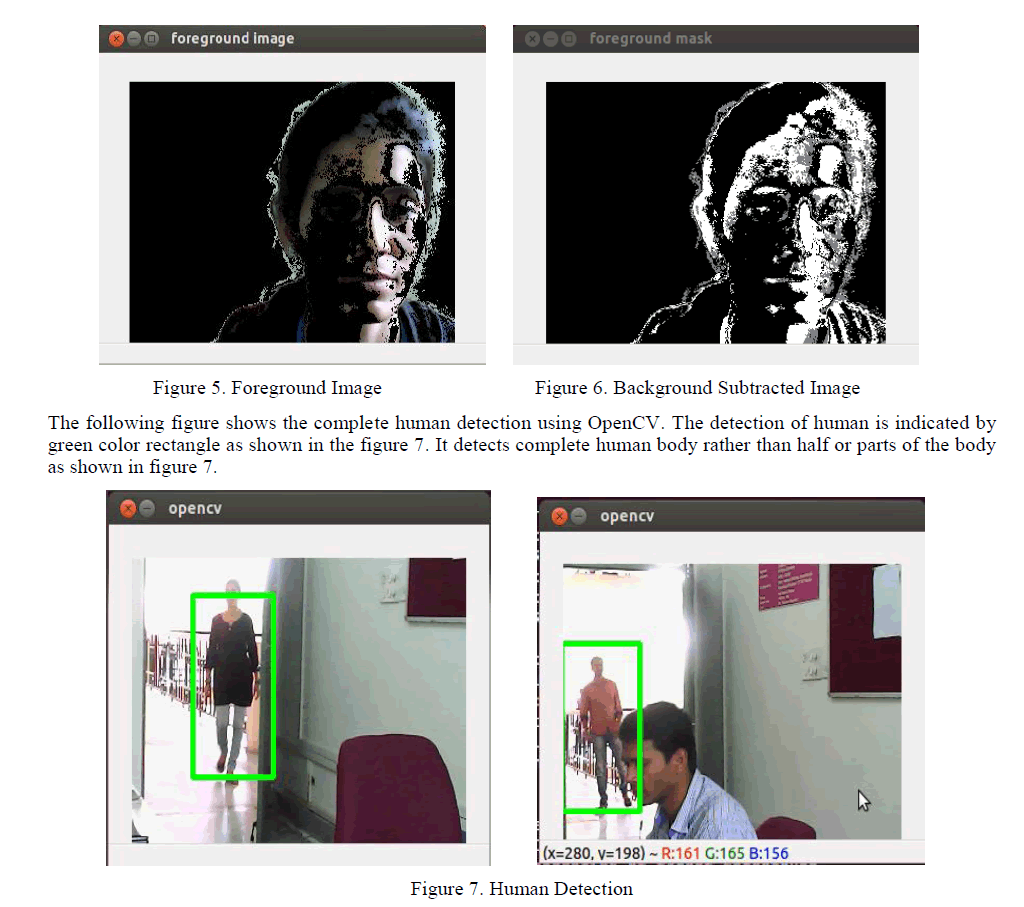Keywords
|
| Nanotechnology; medical technology; biosensors; molecular imaging; implants; cancer Diagnostics; cancer therapy; in vitrodiagnostics |
INTRODUCTION
|
| Nanotechnology is engineering at the molecular (groups of atoms) level. It is the collective term for a range of technologies, techniques and processes that involve the manipulation of matter at the smallest scale (from 1 to 100 nm2). |
| The classical laws of physics and chemistry do not readily apply at this very small scale for two reasons. Firstly, the electronic properties of very small particles can be very different from their larger cousins. Secondly, the ratio of surface area to volume becomes much higher, and since the surface atoms are generally most reactive, the properties of a material change in unexpected ways. For example, when silver is turned into very small particles, it takes on antimicrobial properties while gold particles become any colour you choose. Nature provides plenty of examples of materials with properties at the nanoscale – such as the iridescence of butterfly wings, the sleekness of dolphin skin or the ‘nanofur’ that allows geckos to walk up vertical surfaces. This latter example is illustrated in Figure 1. The Gecko foot pad is covered with aggregates of hair formed from nanofibres which impart strong adhesive properties Nanotechnologists use similar principles to deliberately engineer at the nanoscale to create products that make use of these unusual properties. Starting with nanostructures, scientists rearrange them and then assemble functional systems that can be incorporated into products with unique properties. Figure 1 shows two examples. Firstly, the propensity for carbon to form tubes at the nanoscale can be used to generate arrays over micron sized conductors that illuminate flat panel displays for mobile phones, and secondly nanoparticles can be manipulated to create effective, fully transparent sun block creams. These are but two of many examples of stronger, stickier, smoother and lighter products being developed. |
RELATED WORK
|
| The work of Nanotechnology is classified by the size of the materialsbeing developed and used, the products of this engineering can have little in common with each other – for example fuel cells, fabrics or drug delivery devices. What brings them together is the natural convergence of all basic sciences (biology, physics, and chemistry) at the molecular level. |
| The first aspect is Carbon nanotubes (CNTs) are allotropes of carbon with a cylindrical nanostructure. Nanotubes have been constructed with length-to-diameter ratio of up to 132,000,000:1 significantly larger than for any other material. These cylindrical carbon molecules 118 Biomedical Engineering – Technical Applications in Medicine have unusual properties, which are valuable for nanotechnology, electronics, optics and other fields of materials science and technology. |
| The aspect of most studies use biocompatible polymers to prepare Nano composites materials for electronic components,. The in vitroresults of nanoparticle cytotoxicity studies show ambiguities among different research labs or methods. How tissues or the immune system react with polymer Nano composites material for electronics devices is further confounded with the superposition of the different biological properties of nanoparticles and polymers. This is further complicated by the deficiency of knowledge about the in vivo fate of nanoparticles. These issues and questions suggest the polymer |
| The third aspect is surgical blades can be enhanced significantly when microstructured hard metal is coated with diamond and processed. Major advantages of the diamond nano-layers in this application are low physical adhesion to materials or tissues and chemical/biological inertness. Surgical diathermy is an invaluable facility widely used in operating theatre. It has become an indispensable tool to the modern surgeons and is used in the majority of surgical procedures. Though this technique has proved to be the boon for surgeons by eliminating the use of conventional cutting tools and blood loss, the technique has showed the signs of flaws when it became hazardous for the person itself who wants to save the life of other person i.e. surgeons themselves and also the team assisting them during surgeries. Such type of number of aspects has been analysed in the field of biomedical applications. |
METHODOLOGY
|
| In order to be able to place the nanotechnology applications in medical technology in the right perspective, it is necessary to have a basic understanding of the origin of the unique properties of nanomaterials. Therefore this paper starts with a short section explaining the definitions and features of nanoscience and nanotechnology, followed by a more elaborate overview of the novel nanomaterials and their specific properties which have opened the horizon for the applications in medical technology which are described in the main part of the research paper. Furthermore, in this paper greater emphasis is given on highlighting promising nanotechnology-based approaches in medical technology than on consensus taxonomies of scientific/engineering disciplines. |
NANOMATERIALS:NANOSCALE FEATURES
|
| The prefix nano is from the Greek word nanos (νανοσ) which means dwarf. Commonly, nano is associated with the SI length unit metre and denotes one-billionth. Thus, nanomaterials are characterised at the nanometre scale in one, two or three dimensions, leading to quantum wells (e.g., thin films, layers, surface coatings), quantum wires (e.g., nanotubes, nanowires) or quantum dots (q-dots), respectively (Figure 1). Nanoparticles with a diameter of less <100 nm are for example fullerenes, dendrimers and semiconductor quantum dots. |
| Nanopowders contain particles less than 100 nm in size — 1/10,000th the thickness of a human hair. The physical, chemical and biological properties of such small particles allow industry to incorporate enhanced functionalities into products.Figure 2 shows the different types of products. |
Carbon nonmaterials:
|
| The bonds between carbon atoms are such as to follow the formation of some of the most interesting nanostructures. Solid carbon at room temperature has two classical structures or allotropes: diamond and graphite. In diamond, carbon atoms are connected each to four other carbon atoms in a tetrahedral lattice structure and these bonds form a threedimensional network. Diamond is the hardest mineral known to man and is an excellent electrical insulator. In graphite the carbon atoms are arranged in hexagons and strongly bonded into parallel planar sheets. The sheets are held together by much weaker Van der Waals forces, which is the reason why graphite can be used as material in pencils and as the basis of some lubricants. Unlike diamond, graphite is a conductor of electricity. As illustrated by these classical examples, physical properties can vary considerably within pure carbon materials.Figure 3.Shows the Representation of a C60 molecule source. |
| Carbon nanotubes have exceptional electric and electronic properties. They are metallic or semiconducting depending on the precise structure, i.e. the helicity and diameter of the tube Metallic carbon nanotubes can transport very high current densities of up to 109 A/cm2 without being damaged Normal metal wires (e.g. copper, gold) can transport current up to 105-106 A/cm2 and higher currents would vaporise these metals because of resistive heating. Metallic carbon nanotubes conduct electricity with essentially no resistance at room temperature. |
Field emission applications:
|
| Carbon nanotubes can be used for flat panel displays, lighting applications such as vacuumtube elements, household light bulbs and flat panel luminescent lamps, gas discharge tubes, X-ray generators, and electron guns for the next generation scanning electron microscopes and transmission electron microscopes. Carbon nanotubes might be an alternative to bulky cathode-ray tubes, such as used for televisions and computer monitors, and the more recent liquidcrystal panels and plasma displays. Based on prototypes, the advantages of carbon nanotubes in flat panel displays are suggested to be low power consumption, high brightness, viewable from any angle, fast response rate, wide operating temperature range, no burn-in, lightness, and thinness. Other major companies involved are Motorola Labs and Eikos. Nanotube-based cold cathodes for compact, portable, and miniature X-ray generators are manufactured by Xintek, Inc. These Xray tubes can be set up in a narrow space and possibly X-ray endoscopic imaging and provide improved highresolution images in industrial, biological and medical applications. |
Nanoelectronic applications:
|
| As carbon nanotubes behave like electrical conductors or semiconductors, they could be extremely useful for nanoscale electronics applications. An all-carbon-based nanoelectronic technology can be foreseen in which the electric wiring consists of metallic carbon nanotubes and the active devices are made of semiconductor carbon nanotubes. A lot of progress is yet to be achieved before routine production of carbon nanotube-based integrated circuits becomes possible, though it is currently feasible in an experimental set-up to build a nanocircuit that has wires, switches and memory elements made entirely from carbon nanotubes and other molecules. Currently, Nantero Inc. (Woburn, Massachusetts, USA) is developing NRAM™, a high density non-volatile random acess memory chip using carbon nanotubes as the active memory elements. |
Chemical gas sensors :
|
| Semiconductor SWCNTs are highly sensitive to detect changes in the chemical composition of the surrounding atmosphere at room temperature. Carbon nanotube-based chemical gas sensors have great (commercial) potential in numerous areas ranging from medical applications, environmental monitoring, agricultural applications to the chemical industry and beyond. A plastic composite of carbon nanotubes could provide shielding for electromagnetic interference which is of much concern to military applications. Nowadays command, control and communications are highly digitised and the system must be protected from weapons that emit electromagnetic pulses. |
Battery technology:
|
| Carbon nanotubes can be used as additives in lithium-ion battery systems, lead-acid batteries, and electric double-layer capacitors improving their performance. The merit of electric double-layer capacitors is their high discharge rate, which make them applicable as hybrid energy source for electric vehicles and portable electric devices. |
Thermal properties & applications:
|
| Prior to the discovery of carbon nanotubes, diamond was the best thermal conductor with the highest thermal conductivity of 2600 W/m·K for blue diamond at room temperature. Deduction of experimental values and theoretical calculations for SWCNTs yielded a thermal conductivity ranging from 2980 up to 6600 W/m·K These thermal properties are of great importance for thermal management of nano/microelectronic devices. |
Surgery applications:
|
(a)Surgical blades
|
| The performance of surgical blades can be enhanced significantly when microstructured hard metal is coated with diamond and processed. Major advantages of the diamond nano-layers in this application are low physical adhesion to materials or tissues and chemical/biological inertness. In addition, diamond has a low friction coefficient decreasing the penetration force necessary. Medical specialities that could benefit most from this type of product enhancement are in the field of ophthalmic surgery and neurosurgery. This blade is plasma-polished which decreases the thickness of the coating from 5-25 μm to 0.5 μm and concurrently diminishes the surface roughness to 20-40 nm, approximately. |
(b) Suture needles
|
| New suture needles for ophthalmic and plastic surgery are made of stainless steel incorporating nano-size particles (1- 10 nm quasi crystals) by using thermal ageing techniques Such needles have good ductility, exceptional strength, and corrosion resistance. |
Nanoparticles for cancer therapy:
|
| Well-established therapies commonly employed in cancer treatment include surgery, chemotherapy, immunotherapy, and radiotherapy. |
Thermotherapy:
|
| Thermotherapy refers to hyperthermia as well as thermal ablation therapy. Hyperthermia therapy is based on the fact that tumour cells are more sensitive to temperature increase than normal tissue cells. It involves tumour heating to temperatures between 41-45 °C inducing almost reversible damage to cells and tissues. For thermal ablation therapy higher temperatures are applied, i.e. ranging from 50 °C to 70 °C, leading to the destruction of pathologically degenerated cells. In case of successful treatment, either the tumour disappears, diminishes, or at least stops growing. Thermotherapy can be applied as stand-alone therapy, i.e. thermal ablation, or as adjuvant therapy enhancing the efficacy of chemotherapy and/or irradiation Heating methods can use energy sources based on radiofrequency electric fields, magnetic fields, microwave, ultrasound, and optical applicators. |
Photodynamic therapy
|
| Photodynamic therapy is an emerging treatment modality where a light-sensitive molecule or photosensitiser exposed to visible or near-infrared light induces cytotoxic effects in the presence of oxygen. When photosensitisers are irradiated, the excited molecules can transfer their energy to molecular oxygen. Two types of photodynamic reactions are observed. First, reactions in which electron of hydrogen-transfer occurs producing reactive oxygen species (ROS) or free radicals, such as superoxide (O2 -), hydrogen peroxide, hydroxyl and hydroperoxyl radicals. Second, reactions in which an electron spin exchange occurs between the photosensitiser and triplet oxygen (3O2), resulting in the production of cytotoxic singlet oxygen (O2). Singlet oxygen is accepted as the main mediator of photocytotoxicity in photodynamic therapy, causing irreversible cell damage by oxidation and degradation of (intra)cellular biomembrane structures, but with minimal systemic toxicity Photodynamic therapy can be used to treat a variety of oncological, cardiovascular, dermatological, ophthalmic, and immunological disorders Compared with conventional surgery, the approach is non-invasive, enables accurate targeting, repeated administration without total-dose limitations associated with radiotherapy, and results in little or no scarring after healing. |
Biosensors / Biodetection:
|
| A biosensor is generally defined as a measurement system that consists of a probe with a sensitive biological recognition element, or bioreceptor, a physicochemical detector component, and a transducer. A nanobiosensor or nano sensor is a biosensor that has dimensions on the nanometre size scale. Two types of nanosensors with medical application possibilities are cantilever array sensors and nanotube/nanowire sensors. |
RESULTS AND DISCUSSION
|
| During the review of this paper about theNanotechnology and its engineering applications in the field of biomedical applications and their health problems have read and compared. |
| However, some specific functional components in electric/electronic devices that some would classify as micro technology can only be created if advanced nanotechnologies are applied. Several medical devices have already benefited from recent developments in nanotechnology. These medical devices are in use or are currently being commercialized. In particular, the following medical devices are on the market: |
| 1) Surgical tools with enhanced material properties enabling better handling, |
| 2) Microcantilevers for label-free assays used in molecular in vitrodiagnostics, |
| 3) Novel nano-sized contrast agents for molecular imaging improving the quality of invivodiagnostics,bone replacement materials obtained by nano-structured materials allowing better implant integration and bio-compatibility, |
| 4) Pacemakers and hearing aids based on spintronic technology enabling size reduction and power enhancement of these medical devices, |
| 5) DNA/protein microarrays and lab-on-a-chip devices for molecular in vitro diagnostics |
| 6) Microneedle-based systems for minimally invasive drug administration or for blood substance monitoring limiting tissue damage and pain sensation. |
| 7)Superparamagnetic iron oxide nanoparticles administered by stereotactic navigation based injection for hyperthermia treatment of brain/prostate tumours (now) |
| 8) Superparamagnetic iron oxide nanoparticles conjugated with monoclonal antibodies, injected intravenously for selective, targeted thermotherapy to treat tumours (within 2 years) |
| 9) Sensitiser nanoparticles physically triggered using heat, magnetic field, light, or radiation for tumour treatment (within 3 years) |
| 10)Dendrimer-based nanoplatforms capable of delivering drugs and genes to specific targeted cells with imaging/monitoring modality (within 3 years) |
CONCLUSIONS
|
| Nanotechnology offers important new tools expected to have a great impact on many areas in medical technology. It provides extraordinary opportunities not only to improve materials and medical devices but also to create new “smart” devices and technologies where existing and more conventional technologies may be reaching their limits. It is expected to accelerate scientific as well as economic activities in medical research and development. Nanotechnology has the potential to make significant contributions to disease detection, diagnosis, therapy, and prevention. Tools are important and integral parts for early detection. Novel tools and tools complementing existing ones are envisaged. It offers opportunities in multiple platforms for parallel applications, miniaturization, integration, and automation. New challenges are ahead for the testing at the point-of-care. Point-of-care testing devices enable more widespread monitoring of health parameters in disease prevention, but even more importantly, daily screening of vital health parameters in order to extend and improve quality of life. It is envisaged that point-of-care devices will form an integral part of human life sometime in the future. |
| |
Figures at a glance
|
 |
 |
 |
 |
| Figure 1 |
Figure 2 |
Figure 3 |
Figure 4 |
|
| |
References
|
- M. K. Sanyal, M. K. Mukhopadhyay, M. Mukherjee, A. Datta, J. K. Basu, J. Penfold. Phys. Rev.B65, 033409 (2002).
- Nath S. S., Chakdar D., and Gope G.; Synthesis of CdS and ZnS quantum dots and their applications in electronics, Nanotrends- A journal ofnanotechnology and its application, 02(03), ( 2007).
- T. Vossmeyer, L. Katsikas, M. Giersig, I.G. Popovic, K. Diesner, Chemseddine, A. Eychmuller and H. Weller, J. Phys. Chem. 98, 7665 (1994).
- S. Nakamura, K. Kitamura, H. Umeya, A. Jia, M. Kobayashi, A.Yoshikawa, M. Shimotomai and K. Takahashi, Electron. Lett. 34, 2435 (1998).
- Roszek, B; de Jong W.H.; Geertsma R.E. of RIVM report 265001001/2005
- Gurnule W B,; Dhote S S,; Pharma J. Der Chemica,; 4(2): 791,2012
- Khan, F. and Bilgainya, R., Synthesis and characterization of metal and metal oxide sponges using Triton X-165 as sacrificial template.Indian J. Chem. A, 2011, 55–59.
- S.S.Shende, P.B.Dahikar2, MJ.Hedau3, K.Y. Rokde4 International Journal of Innovative Research in Computerand Communication
- Engineering(An ISO 3297: 2007 Certified Organization)Vol. 2, Issue 1, January 2014 p-p 2626-2631
- M. J. Hedau, M. P. Dhore, P. B. Dahikar, “Application of Wireless Signal Simulation Via Cell-Phone “International Conference on circuit
- system and simulation, , pp. 92–95, Vol.7, IACSIT Press, Singapore, 2011
- M. J. Hedau, M. P. Dhore, P. B. Dahikar, “Application of Microcontroller in Technical communication”International Journal of ETA and ETS,
- IACSIT ISSN No 0974-3588Vol.5Issue 1,2012.
- 1P. B. Dahikar M. J. Hedau, S. C. Moholkar “Application of Microcontroller in Receiving Unit of the Technical Communication”
- International Journal of ETA and ETS, IACSIT ISSN No 0974-3588 Vol.5 Issue 2, 2012.
|